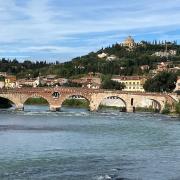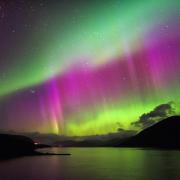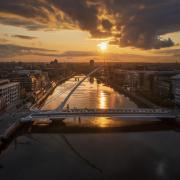The northern lights have illuminated the skies on Sunday night with the Met Office confirming sightings spread across the UK.
The Met Office said the lights were “observed across Scotland, clearly visible from Shetland webcams, and sightings reported across some central and eastern parts of England”.
On Sunday the Met said the best chances to see the northern lights, also known as aurora borealis, were in Scotland, but “it could be possible as far south as central Wales and England”.

These stunning photos were taken over Bamburgh in Northumberland on the North East coast of England on the night of November 5th 2023.
Professor Don Pollacco, department of physics at the University of Warwick, said the phenomenon was caused by “the interaction of particles coming from the sun, the solar wind, with the Earth’s atmosphere – channelled to the polar regions by the Earth’s magnetic field.
“It’s actually a bit like iron filings and the field of a bar magnetic.

“The solar wind contains more particles when there are sun spots, as these are regions on the sun’s surface where the magnetic field is interacting with the plasma in the sun, and the particles can be released.
“Once the particles are channelled into the Earth’s atmosphere they interact with molecules and have distinctive colours (eg oxygen molecules produce green light, nitrogen red light etc) and patterns such as light emissions that look like curtains or spotlights.
“These shapes change quickly over timescales of minutes/seconds.”

READ MORE: Top tips on spotting the northern lights in the UK
The Space and Planetary Physics research team at Lancaster University runs AuroraWatch UK, a tool that uses real-time measurements of the geomagnetic activity that accompanies solar storms to post alerts to social media channels and a dedicated smartphone app warning that aurora sightings are possible over the UK.
You can find AuroraWatch UK on Twitter and Facebook. The AuroraWatch app is available free for Android and Apple devices.


























